If you take a few minutes to follow the natural hair community around social media you’ll quickly come to the conclusion that wash day is not met with excitement and, from what I see, even though the reason is often related to lengthy hair routines and multi-step hair care practices there could be something happening with your curly hair that adds to all the discontent.
Yes, there are several reasons why, for many curly girls, wash day is often seen as a chore faced with dread and stress, much like studying for or doing exams (well, at least for most normal people 😉 ). Detangling can easily be singled out as one of the main reasons why wash day seems to suck the energy out of us even before we get started, however, there could be a few reasons why your curly tresses tangle and knot so much.
No one likes a laborious and lengthy detangling session where detangling feels like an arm workout session and hair scissors (not paper, kitchen or sewing scissors!!)) often get called to their duty. Still, if the condition of your hair’s cuticle layer is damaged and open tangles and knot and even breakage are often what you’ll get faced with when wash day comes.
What is a healthy hair cuticle?
A ‘healthy hair’ cuticle is one which has its cuticle layers (outer layer of the hair) laying flat and feels smooth (well, somewhat smooth for curly hair). If the cuticle layers are not laying flat or are too open the hair won’t slide against each other and will instead tangle, form knots more easily and develop split ends which will lead to breakage.
Moreover, having your cuticle layers compromised also means your hair is unable to retain moisture well and will become dehydrated sooner leading up to breakage, once again.
As a side note, I would like to say that while naturally high porosity hair has its cuticles open it can be healthy in the sense that its a natural characteristic of it, proper hair care practices and products can ensure it maintains proper levels of moisture and tangles and knots to a minimum and remains healthy.
Why Your Hair Tangles So Much
& What To Do About It
As said earlier, a compromised cuticle can be at the root of your tangles and knots, so let’s have a look at some of the reasons why it is compromised.
#1| LACK OF MOISTURE
Yep, if your hair is not receiving enough moisture it will get dry and weak and because the cuticle layers are your hair’s first line of defence they’ll will open facilitating tangles and knot which will lead to cracked and broken cuticle and even holes in the hair shaft that will be unable to efficiently delay moisture release.
DO
Shampoo and condition your hair regularly and make sure you’re using botanical products, made with water-soluble ingredients that are primarily naturally and/or naturally derived ingredients. Avoid film-forming ingredients and direct use of raw ingredients like oils and butter on your hair, have them in your products instead. 😉
#2| STRONG SHAMPOO
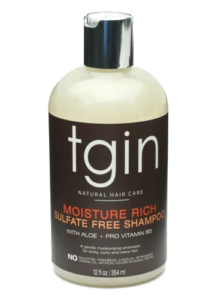 The use of strong sulphate shampoos excessively remove the hair’s natural protective ‘oily’ layer – the sebum – that together with the cuticle layers delay the release of moisture
The use of strong sulphate shampoos excessively remove the hair’s natural protective ‘oily’ layer – the sebum – that together with the cuticle layers delay the release of moisture
DO
Make sure you use a sulphate free shampoo for your weekly wash day and leave stronger sulphate shampoos for removing product build-up and hard water minerals. Read this post to understand more about sulphates and choose your shampoos better.
#3| USING A REGULAR TOWEL
This may sound weird but it actually isn’t, terry cloth towels not only remove too much moisture from the hair but they can also trap, snag and break your hair. Additionally, towel drying your hair vigorously will also compromise your hair cuticles.
DO
Use a microfiber or t-shirt towel to dry your hair or assist in styling it. They avoid all the wrongdoing of a terry cloth towel plus they’ll minimise frizz. At Breezy Tee you can get your t-shirt towel in a variety of colours or you can just use one of your own big old t-shirts. Alternatively, you can also get a microfiber towel like this one from Amazon. 😉
#4| CHEMICALS
When done well and with proper aftercare dying and bleaching your hair doesn’t necessarily lead to damage but it does unequivocally alter the structure of the hair. It generally increases porosity (opened cuticle layers) and makes the hair more thirsty as it is unable to retain moisture properly.
Similarly to hair dye and bleach, baking soda can also alter the cuticles of the hair. It is a common practice among a group of curly girls but it can seriously damage your curly hair. My advice is for you to stay away from it. You can read more about it here. and don’t forget to check my Curly Guide to Deep Conditioning.
DO
If you’re interested in dying or bleaching your hair make sure your hair is healthy enough to endure the treatment. It is a good idea to strengthen your hair with a protein treatment before bleaching or dying. Make sure you asses your hair needs and match these with the strength of your protein deep conditioner. Read this post to know what to do before bleaching/dying and this one to help you identify the strength of your protein treatment.
#5| HEAT
Exposing the hair to high temperatures also causes damages to the hair cuticles that facilitate hair tangles and knots. Frequent exposure to high sun temperature or heat styling tools like blow dryers (direct use), curling wands or flat irons should be limited to avoid damage.
DO
Keep the use of heat styling tools to a minimum and when doing it make sure you deep condition to replenish moisture and strength and always use a heat protectant (read this post on about silicones for hair). As for sun protection, again, deep conditioning regularly is essential. Read this post for more tips.
#6| HEALTH
Health issues with your body can also affect the health of your hair. Conditions like stress, anaemia, thyroid or menopause can make your hair weaker and even cause hair loss. In this situation, it’s not unusual to experience more tangles and knots.
DO
It’s important to monitor your health and talk to your doctor about any changes you notice so he/she can prescribe the right medication to address your health condition. Please notice that certain medications can negatively affect your hair and if it worsens ask your doctor to adjust/change medication.
In the meantime, make sure you give your hair the right balance of moisture and protein when deep conditioning (do it weekly, preferably) and also stay away from using direct use and doing chemical treatments regular until your hair is stronger/healthier.
#7| Protective Hairstyles
Protective hairstyles are great, they show how creative we can be with our hair, they help us achieve our goals of moisture and growth, but when done back to back with no rest they can damage the outside layer of the hair. Just like when you keep your hair tied up in the same place, in the same way, you are bound to create breakage to the compressed area a similar thing happens when you keep your hair braided or twisted week upon week with no rest (and yes, even if you wash and redo them weekly you got the same issue).
Continuously doing protective hairstyles eventual compromises your hair cuticles and even your hair’s elasticity since you are forcing your hair to be in a form (e.g. braids or twists) that is not normal to it. You are essentially keeping your hair in a stretched form and, much like what happens to an elastic band, when stretched too far or often enough it loses elasticity.
DO
 It may sound like I am going against what I’ve just said, but my advice is for you to keep doing your favourite protect I want you to enjoy this new journey and there is nothing wrong with them. However, keep in mind that you need to give your hair a rest from them. If protective styles are all you do you’ll never have the chance to learn how to care and enjoy your natural hair texture.
It may sound like I am going against what I’ve just said, but my advice is for you to keep doing your favourite protect I want you to enjoy this new journey and there is nothing wrong with them. However, keep in mind that you need to give your hair a rest from them. If protective styles are all you do you’ll never have the chance to learn how to care and enjoy your natural hair texture.
If you’re worried about your limp transitioning hair (believe me, I know what that is! I had it for 2,5 years!) and blending it with your new texture, don’t be. I’ve seen curly hairstylists do an amazing job of creating curls or manipulating hair with The Doux Mousse Def and the Design Essentials (pic) hair foam.

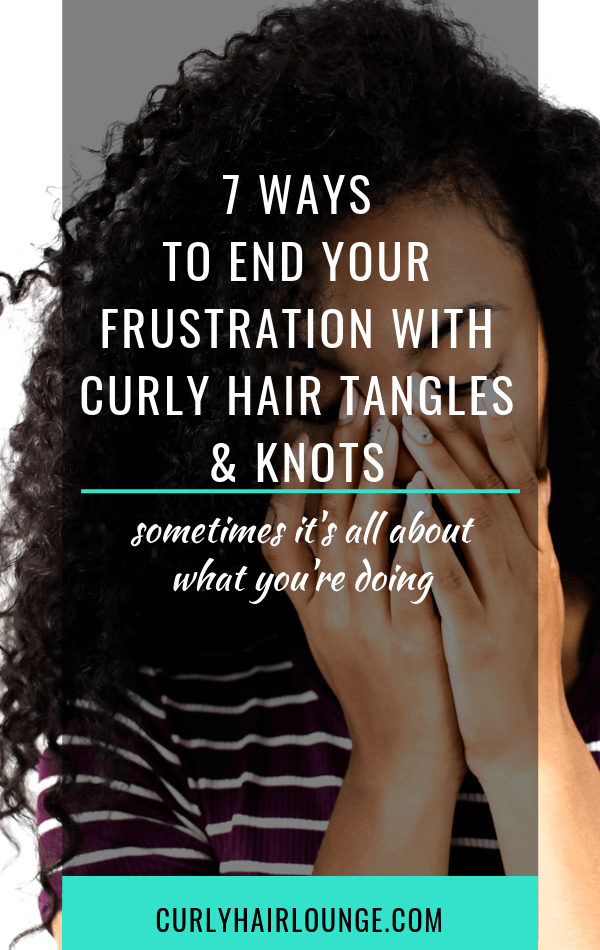
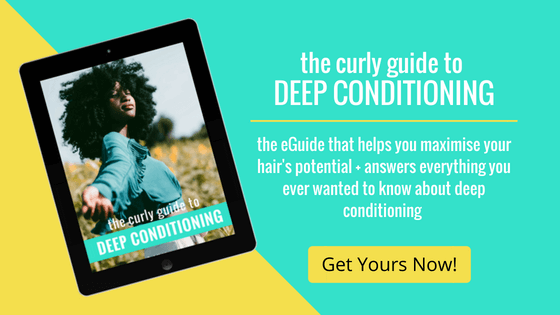

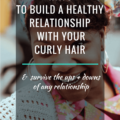
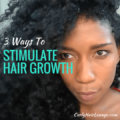

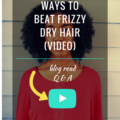
2 thoughts on “7 Ways To End Your Frustration With Curly Hair Tangles And Knots”
Please check section #3 “Using A Regular Towel”….”Do” section, first line. The “r” in “shirt” is missing…? Otherwise, thanks for the insight.
B, Thank you. (a bit embarrassed here)